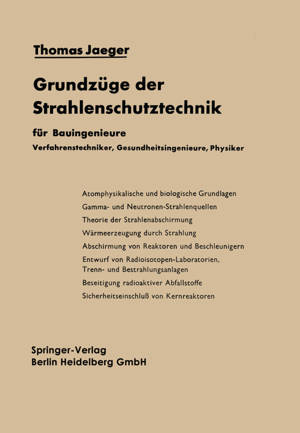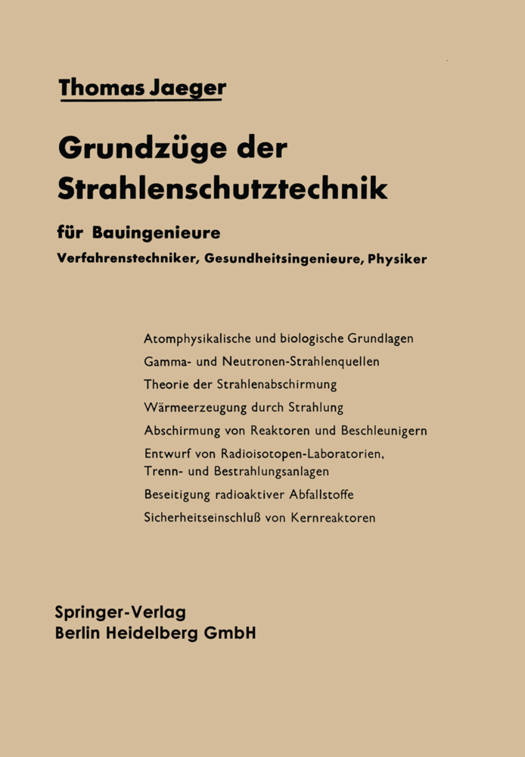
- Afhalen na 1 uur in een winkel met voorraad
- Gratis thuislevering in België vanaf € 30
- Ruim aanbod met 7 miljoen producten
- Afhalen na 1 uur in een winkel met voorraad
- Gratis thuislevering in België vanaf € 30
- Ruim aanbod met 7 miljoen producten
Zoeken
Grundzüge Der Strahlenschutztechnik
Für Bauingenieure, Verfahrenstechniker, Gesundheitsingenieure, Physiker
Thomas Jaeger
Paperback | Duits
€ 59,45
+ 118 punten
Omschrijving
Radiation shielding has been for many years - too many years - the province of physicists and mathematicians. This is not to say that these have been the only ones confronted with shielding problems. Nuclear engineers encounter them daily. But physicists needed to shield first their accelerators and later their reactors, and they, with mathematicians, have developed the methods. And for too long engineers have relied on advice from these original shielders in their own design problems. The difficulty has been largely one of communication. Physicists, from FERMI and ZINN, who performed the first reactor shield research, to those currently so engaged, have written reports which were in the Physicists' language, and which did not extrapolate from their special data to the general problems. Later, texts on shielding were written by physicists - GOLDSTEIN, and PRICE, HORTON and SPINNEY - which told of the knowledge at hand. The engineer ROCKWELL edited the contributions of many people, most of whom were physi- cists, in another text, but even this engineered approach attempted little more than to record experience from the submarine program.
Specificaties
Betrokkenen
- Auteur(s):
- Uitgeverij:
Inhoud
- Aantal bladzijden:
- 392
- Taal:
- Duits
Eigenschappen
- Productcode (EAN):
- 9783662011539
- Verschijningsdatum:
- 14/10/2012
- Uitvoering:
- Paperback
- Formaat:
- Trade paperback (VS)
- Afmetingen:
- 170 mm x 244 mm
- Gewicht:
- 653 g

Alleen bij Standaard Boekhandel
+ 118 punten op je klantenkaart van Standaard Boekhandel
Beoordelingen
We publiceren alleen reviews die voldoen aan de voorwaarden voor reviews. Bekijk onze voorwaarden voor reviews.











